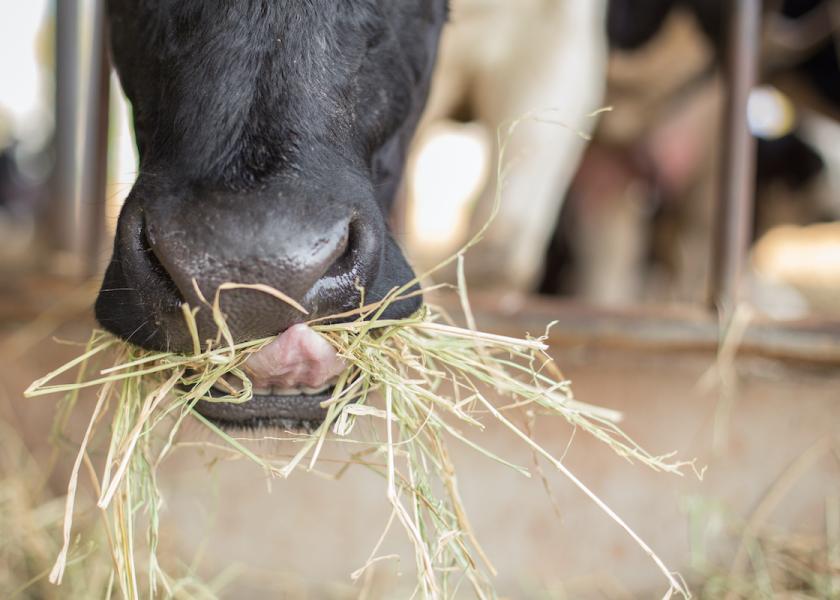Two Reasons Why Feeding Hay Could Help Alleviate Cross-Sucking

There’s a rising pile of research that supports the benefits of raising preweaned calves in pairs or groups.
Dr. Emily Miller-Cushon, Associate Professor of Animal Behavior and Welfare at the University of Florida, has dedicated her research career to animal behavior, focusing largely on calf behavioral development.
On a recent episode of The Dairy Podcast Show, Miller-Cushon said eating behavior is positively influenced by social rearing. She noted calves raised in pairs and groups will eat more solid feed, and animals develop a preference for feed that others in the group are eating.
“We underestimate the role of the social environment in developing when and how much animals eat,” she stated.
But Miller-Cushon said, even when calves are group-housed and raised on autofeeders, their desire to suckle isn’t always completely satisfied. “Calves are very motivated to suckle,” she stated, noting that non-nutritive sucking is related to the release of hormones involved in satiety and digestion. She said there also is research in human babies showing that suckling can help calm the baby and provide an analgesic effect following painful procedures.
“Suckling on its own isn’t the problem,” she declared. “The problem is when there isn’t an appropriate outlet for it.” That’s when cross-sucking of pen mates can occur, along with pen-directed sucking and chewing, both of which can become bad habits that are performed repeatedly over time.
To address the need to suckle, Miller-Cushon suggested providing more milk in the diet, and feeding calves from a teat versus a pail. She said offering dummy teats also works in some cases, though calves don’t always embrace them.
But another strategy that she believes does help is offering calves hay to provide another outlet for oral manipulation. “We’re not necessarily concerned about giving them high-quality hay because they’re receiving the nutrition they need through milk and their starter ration,” she stated. “But when calves get hay, we see less abnormal oral behavior, in terms of cross-sucking or pen-directed sucking and chewing.”
Miller-Cushon noted that while she is not a nutritionist, she believes in the value of feeding hay from a behavioral standpoint in that it satisfies calves’ natural instincts to eat what they desire. She said studies have shown that in terms of intake, offering hay in the preweaning period has actually increased starter grain intake as well in some cases, or at least not diminished it.
In her own team’s research, they have found that the ratio of starter grain to hay intake increases over time, so calves are eating more starter as they approach the critical weaning period.
She also believes feeding hay free-choice – versus grinding or chopping it – is most beneficial for calves, and provides the greatest opportunity for oral manipulation. She and her colleagues found that when hay was processed and fed to calves more “TMR-style,” calves still sorted for hay, with no difference in the reduction of abnormal oral behavior.
Post-weaning, the calves fed chopped hay in a mixed ration actually sorted more for hay than those that had received hay and starter grain as separate ingredients in the preweaning phase. “So, if you want to give calves hay, just give it to them, and see what they do with it,” she advised.
In all of her research, hay was offered beginning at the same time starter grain was introduced. But Miller-Cushon said hay provision is especially important around weaning time when calves are highly motivated to cross-suck.
She said other research has shown that providing calves hay also may positively influence calves’ learning ability.
"Pretty much universally, we’ve seen benefits to giving calves hay earlier in life,” she stated.







